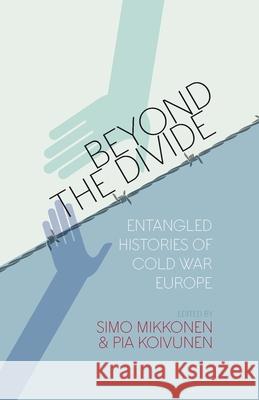Beyond the Divide: Entangled Histories of Cold War Europe » książka
Beyond the Divide: Entangled Histories of Cold War Europe
ISBN-13: 9781782388661 / Angielski / Twarda / 2015 / 335 str.
Beyond the Divide: Entangled Histories of Cold War Europe
ISBN-13: 9781782388661 / Angielski / Twarda / 2015 / 335 str.
(netto: 480,17 VAT: 5%)
Najniższa cena z 30 dni: 502,10
ok. 30 dni roboczych
Bez gwarancji dostawy przed świętami
Darmowa dostawa!
Cold War history has emphasized the division of Europe into two warring camps with separate ideologies and little in common. This volume presents an alternative perspective by suggesting that there were transnational networks bridging the gap and connecting like-minded people on both sides of the divide. Long before the fall of the Berlin Wall, there were institutions, organizations, and individuals who brought people from the East and the West together, joined by shared professions, ideas, and sometimes even through marriage. The volume aims at proving that the post-WWII histories of Western and Eastern Europe were entangled by looking at cases involving France, Denmark, Poland, Romania, Switzerland, and others.
Cold War history has emphasized the division of Europe into two warring camps with separate ideologies and little in common. This volume presents an alternative perspective by suggesting that there were transnational networks bridging the gap and connecting like-minded people on both sides of the divide. Long before the fall of the Berlin Wall, there were institutions, organizations, and individuals who brought people from the East and the West together, joined by shared professions, ideas, and sometimes even through marriage. The volume aims at proving that the post-WWII histories of Western and Eastern Europe were entangled by looking at cases involving France, Denmark, Poland, Romania, Switzerland, and others.











